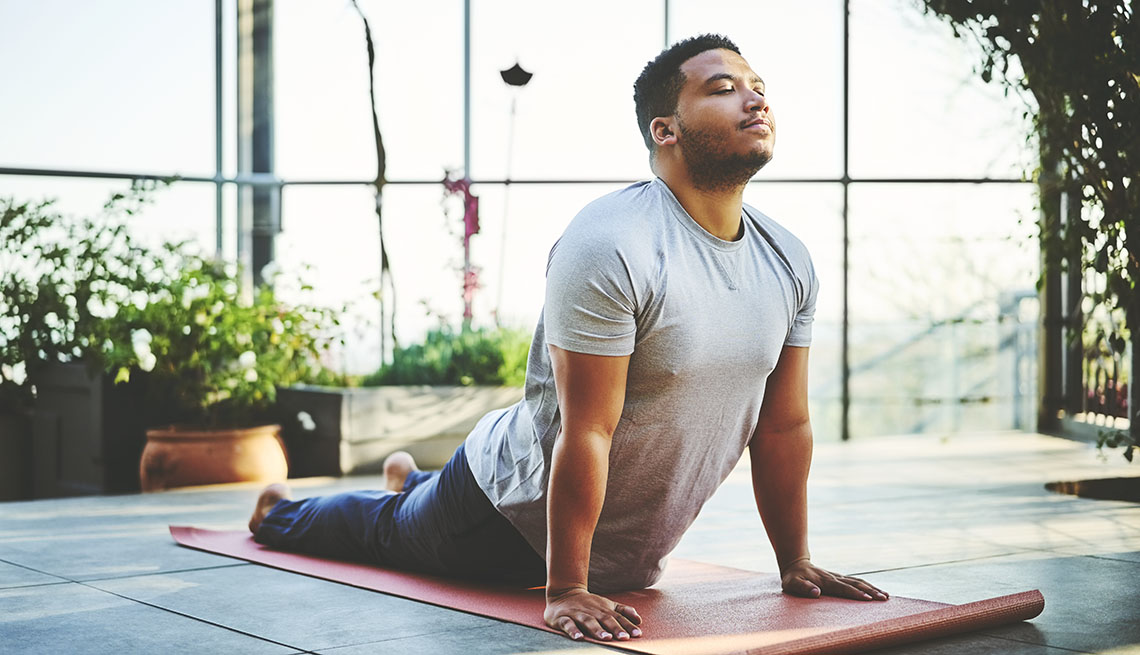Play all audios:
BETTER DIGESTION By creating calm, you can also enhance the functioning of the gastrointestinal tract, rebalancing your microbiota, the bacteria in your gut, so you're better able to
absorb nutrients, says Gordon. In a 2020 study, published in the journal _Neurogastroenterology & Motility_, patients with irritable bowel syndrome (IBS) took eight weeks of
mindfulness-based stress reduction training. Following their training, more than 70 percent of the participants reported a reduction in the severity of their IBS symptoms. The key to
lowering stress levels — and reaping those health benefits — lies in calming the sympathetic branch of our autonomic nervous system (responsible for our body's fight-or-flight response)
and activating our parasympathetic nervous system, which helps return our body to a calm stage. Focusing on the breath, and learning to slow it down, can lower stress hormones. It's
taught to veterans with PTSD, in corporate settings, pain clinics, prisons and anywhere else stress levels are high (i.e., practically everywhere these days). Morning Yoga With Expert Rolf
Gates 5 SHORT BREATHING EXERCISES 1. FOCUSED BREATHING: Concentrative meditation involves focusing on a single point. It could be a visual image (say, a picture of a flower or the flickering
flame of a candle), a sound or the sensation of your own breath. One technique Gordon recommends is called soft belly breathing. Sit in a comfortable chair. With your eyes closed, breathe
slowly and deeply. Focus on the breath coming in through your nose and going out through your mouth, with your belly soft and relaxed. “You can say the word ‘soft’ to yourself as you breathe
in and ‘belly’ as you breathe out,” says Gordon. When a stray thought pops into your head — and it will — acknowledge it, then let it pass, bringing yourself back to the present moment. You
can do this exercise for 10 minutes, five minutes, or even three minutes. 2. SLOWER BREATHING: Try slowing your breath even more. If you normally inhale for three seconds and exhale for
three seconds, try increasing that to four seconds in and four seconds out. Another technique is to stay at three seconds when inhaling but slowly increase your exhales to four, five or even
six seconds. “Inhalation is tied more to the sympathetic nervous system, exhalation to the parasympathetic nervous system,” says Timothy McCall, a board-certified physician specializing in
internal medicine and author of _Yoga as Medicine: The Yogic Prescription for Health and Healing_. “So if you start to increase the exhalation relative to the inhalation, it tends to be more
calming.” 3. MANTRA REPETITION: While doing a deep-breathing exercise, repeat a word or a sound. It could be anything — om, one, peace, love. For those who are religious, it might be a
prayer. One of McCall's favorite mediations, _sohum_ mantra meditation, comes from yoga. “This is a meditation based on the sound your breath makes when it comes into your nose and when
it leaves your nose,” says McCall. “That's what the ancient yogis thought they could hear upon inhalation (_so_) and on exhalation of (_hum_). You're not making those sounds —
you're listening for sounds with each inhalation and exhalation.” 4. ALTERNATE NOSTRIL BREATHING: A 2013 study found that people who practiced this technique not only lowered their
stress levels, their cardiovascular function improved. How to do it: Close your eyes. Use the thumb of your right hand to block your right nostril, and inhale deeply through the left for six
seconds. Now cover your left nostril with the fourth finger of your right hand, release your right nostril, and exhale slowly for six seconds. With your left nostril blocked, breathe in
through your right side for six seconds; cover your right nostril again, release your left and exhale for six seconds. Repeat for at least two minutes. 5. BODY SCAN: This technique can be
helpful for chronic pain or to simply release tension. Lie on your back, eyes closed, breathing slowly. Allow your mind to move up your body — from toe to foot to ankle, and through the rest
of your body. Bring attention to each part of your body, being aware of any sensations, then let it go and move on. If you notice pain, acknowledge it and gently breathe through it. Time to
Unwind With Yoga Expert Rolf Gates

